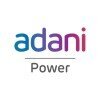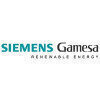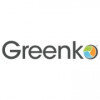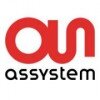
i
Jakson
Group
Proud winner of ABECA 2025 - AmbitionBox Employee Choice Awards
Filter interviews by
Jakson Group Interview Questions and Answers
64 Interview questions
Yes, I have experience checking major materials like cables, conductors, and transformers for quality assurance.
Conducted inspections on cables to ensure they meet industry standards for insulation and conductivity.
Performed tests on conductors to verify their resistance and thermal properties, ensuring reliability in electrical systems.
Evaluated transformers for efficiency and safety, including checking for oil l...
Red bin analysis focuses on identifying defects, while rejection analysis examines reasons for product rejection.
Red bin analysis involves categorizing defects found during inspections to identify trends.
Example: If multiple products in a batch show similar defects, it indicates a systemic issue.
Rejection analysis looks at the reasons behind product rejections to improve processes.
Example: If a high percentage of ...
MIG welding, or Metal Inert Gas welding, is a process that uses a continuous wire feed to create an electric arc for welding.
MIG welding is also known as Gas Metal Arc Welding (GMAW).
It uses a spool of wire as an electrode, which melts to join metals.
Inert gas, typically argon or helium, protects the weld from contamination.
MIG welding is versatile and can be used on various materials, including steel, aluminum, a...
Preparing project billing involves systematic steps to ensure accuracy and compliance with contractual agreements.
Review Contract: Start by thoroughly reviewing the project contract to understand billing terms, milestones, and payment schedules.
Gather Documentation: Collect all relevant documents such as invoices, receipts, and timesheets to support the billing process.
Calculate Costs: Accurately calculate all pro...
A Planning and Billing Manager oversees project planning, resource allocation, and billing processes to ensure efficiency and accuracy.
Project Planning: Develops detailed project plans, including timelines and resource allocation, to ensure projects are completed on schedule.
Budget Management: Monitors project budgets and expenses, ensuring that costs are controlled and aligned with financial forecasts.
Billing Pro...
Handling project billing involves challenges like accuracy, communication, and compliance with financial regulations.
Accuracy in Billing: Ensuring that all project expenses are accurately captured and billed to clients can be challenging. For example, missing out on labor hours can lead to revenue loss.
Communication with Stakeholders: Coordinating with project managers and clients to clarify billing details and re...
Cash flow is the movement of money in and out of a business, crucial for maintaining operations and financial health.
Monitor Cash Flow Regularly: Use cash flow statements to track inflows and outflows, ensuring you have a clear picture of your financial position.
Forecast Cash Flow: Predict future cash flows based on historical data and expected changes in revenue or expenses, helping to plan for shortfalls.
Manage ...
Effective contractor billing and reconciliation involves accurate tracking, clear communication, and timely processing of invoices.
Detailed Invoicing: Ensure that contractors provide detailed invoices that clearly outline the services rendered, hours worked, and any materials used. For example, if a contractor submits an invoice for plumbing work, it should specify the type of work done and the materials purchased...
Effectively managing client disputes involves active listening, empathy, and finding mutually beneficial solutions.
Active Listening: I ensure I fully understand the client's concerns by listening attentively and asking clarifying questions. For example, during a project delay, I listened to the client's frustrations and acknowledged their impact.
Empathy: I express understanding of the client's feelings and frustra...
Yes, I am proficient in using computers for various tasks including data entry, research, and communication.
I am skilled in using Microsoft Office Suite, including Word for document creation and Excel for data analysis.
I can navigate the internet effectively for research and information gathering.
I am familiar with various software applications relevant to my field, such as electronic health records in a medical c...
Jakson Group Interview Experiences
89 interviews found
Assistant Marketing Communication Manager Interview Questions & Answers
posted on 29 Jan 2025
(2 Questions)
- Q1. About experience
- Q2. General questions
(2 Questions)
- Q1. About experience
- Q2. General questions
(2 Questions)
- Q1. About experience
- Q2. Job knowledge, communication and questions based on case scenario
Interview Preparation Tips
(3 Questions)
- Q1. Cable type and it's current rating
- Ans.
Cable type refers to the construction and materials used in a cable, while current rating indicates the maximum current that can safely flow through the cable.
Cable type can be categorized based on insulation material (e.g. PVC, XLPE), conductor material (e.g. copper, aluminum), and construction (e.g. single-core, multi-core)
Current rating is determined by factors such as conductor size, insulation material, and ambien...
- Q2. What were the costs and other technical parameters, such as the client and scope of work, for your last project?
- Ans.
The costs and technical parameters for my last project included client A, scope of work B, and a budget of $100,000.
Client: Company A
Scope of work: Development of new software system
Cost: $100,000
Technical parameters: Integration with existing systems, timeline of 6 months
- Q3. What are the types of substations and how does a bay function within them?
- Ans.
Substations can be categorized into different types based on their functions and voltage levels. A bay within a substation is a specific area where equipment is located.
Types of substations include distribution substations, transmission substations, and switching substations.
Distribution substations typically step down voltage for local distribution to customers.
Transmission substations step up voltage for long-distanc...
I applied via Company Website and was interviewed in Nov 2024. There were 3 interview rounds.
(1 Question)
- Q1. Yes i am interested to HR Interview
(2 Questions)
- Q1. Yes i am also interested to TECHNICAL interview
- Q2. Sir I tell u everything About AUTO bussing machine
I am interested to Aptitude test
Interview Preparation Tips
Machine Operator Since May 2024 to till now.
It was all about aptitude
One topic was given and total 17 students were there
(3 Questions)
- Q1. Manufacturing processes
- Q2. Thermodynamics and quality control
- Q3. Lean manufacturing and kaizen
Purchase Grains for Ethanol and Distillery
(1 Question)
- Q1. How can fix prices on the basis of specifications
- Ans.
Fixing prices based on specifications involves analyzing product details, market trends, and supplier costs to ensure fair pricing.
Understand the specifications: Clearly define the product specifications to ensure accurate pricing.
Market analysis: Research market prices for similar products to gauge competitive pricing.
Supplier quotes: Obtain quotes from multiple suppliers to compare costs based on the same specificati...
Interview Preparation Tips
(2 Questions)
- Q1. About last working profile and current Ctc, job location
- Q2. Notice period discussion
(2 Questions)
- Q1. Related to work profile.
- Q2. About the devices, protocol, and about jakson working and company details.
(1 Question)
- Q1. Salary negotiations, offer letter
Interview Preparation Tips
(2 Questions)
- Q1. Profile and last ctc discussion.
- Q2. Job role, and location
(1 Question)
- Q1. About iec protocol, last working
(1 Question)
- Q1. Final offer letter, salary negotiations.
Interview Preparation Tips
Kindly discuss clearly about job location, hr policy, reimbursement policy.
I appeared for an interview in Dec 2024, where I was asked the following questions.
- Q1. What is the Defferent Red bin analysis & rejection analysis?
- Ans.
Red bin analysis focuses on identifying defects, while rejection analysis examines reasons for product rejection.
Red bin analysis involves categorizing defects found during inspections to identify trends.
Example: If multiple products in a batch show similar defects, it indicates a systemic issue.
Rejection analysis looks at the reasons behind product rejections to improve processes.
Example: If a high percentage of produ...
- Q2. What is MIG Welding?
- Ans.
MIG welding, or Metal Inert Gas welding, is a process that uses a continuous wire feed to create an electric arc for welding.
MIG welding is also known as Gas Metal Arc Welding (GMAW).
It uses a spool of wire as an electrode, which melts to join metals.
Inert gas, typically argon or helium, protects the weld from contamination.
MIG welding is versatile and can be used on various materials, including steel, aluminum, and st...
- Q3. List count of micrometre, Varnier Caliper, Hight Gauge?
- Ans.
Measurement tools like micrometres, Vernier calipers, and height gauges are essential for precision in quality control.
Micrometre: Measures small dimensions with high accuracy, typically up to 1 micrometre.
Vernier Caliper: Measures internal and external dimensions, with a precision of 0.02 mm.
Height Gauge: Used to measure vertical dimensions, often with a scale of 0.01 mm.
Interview Preparation Tips
(2 Questions)
- Q1. Current Salary and the location
- Q2. Work experience
(2 Questions)
- Q1. Work experience
- Q2. Technical questions related to solar
I appeared for an interview in Dec 2024, where I was asked the following questions.
- Q1. What is your experience in project
- Ans.
I have extensive experience managing complex engineering projects, ensuring timely delivery and adherence to quality standards.
Led a team of engineers on a $5 million infrastructure project, completing it 10% under budget.
Implemented Agile methodologies to improve project efficiency, resulting in a 20% reduction in project timelines.
Coordinated cross-functional teams to deliver a new product line, achieving a 30% incre...
- Q2. What is plan in project
- Ans.
A project plan outlines objectives, resources, timelines, and tasks to ensure successful project execution.
Defines project scope and objectives, e.g., increasing production capacity by 20%.
Identifies resources needed, such as personnel, equipment, and budget.
Establishes a timeline with milestones, e.g., completing design phase by Q2.
Assigns roles and responsibilities to team members, ensuring accountability.
Includes ri...
- Q3. What is the capacity in 100 kva transformer
- Ans.
A 100 kVA transformer can handle a maximum load of 100 kVA, translating to approximately 80 kW for resistive loads.
kVA (kilovolt-amperes) measures apparent power, while kW (kilowatts) measures real power.
For a transformer with a power factor of 0.8, the maximum real power is 80 kW (100 kVA x 0.8).
Transformers are rated in kVA because they can supply both resistive and reactive loads.
Example: A 100 kVA transformer can p...
- Q4. What is the distenes ground to transformer
- Ans.
The distance from ground to transformer varies based on installation type and safety standards, typically ranging from 3 to 10 feet.
Transformers should be elevated to prevent flooding; for example, outdoor transformers are often placed on concrete pads.
The National Electrical Code (NEC) recommends a minimum height for transformers to ensure safety and accessibility.
In urban areas, transformers may be installed closer t...
Top trending discussions







Jakson Group Interview FAQs
Some of the top questions asked at the Jakson Group interview -
The duration of Jakson Group interview process can vary, but typically it takes about less than 2 weeks to complete.
Tell us how to improve this page.
Jakson Group Interviews By Designations
- Jakson Group Senior Engineer Interview Questions
- Jakson Group Assistant Manager Interview Questions
- Jakson Group Quality Engineer Interview Questions
- Jakson Group Engineer Interview Questions
- Jakson Group Senior Electrical Engineer Interview Questions
- Jakson Group Manager Interview Questions
- Jakson Group Electrical Engineer Interview Questions
- Jakson Group Graduate Engineer Interview Questions
- Show more
Interview Questions for Popular Designations
Overall Interview Experience Rating
based on 111 interview experiences
Difficulty level
Duration
Interview Questions from Similar Companies
Jakson Group Reviews and Ratings
based on 1.1k reviews
Rating in categories
|
Assistant Manager
225
salaries
| ₹4.6 L/yr - ₹14.8 L/yr |
|
Senior Engineer
152
salaries
| ₹4 L/yr - ₹11 L/yr |
|
Engineer
105
salaries
| ₹2.4 L/yr - ₹6.9 L/yr |
|
Manager
91
salaries
| ₹8.2 L/yr - ₹22.5 L/yr |
|
Senior Executive
77
salaries
| ₹2.4 L/yr - ₹8.8 L/yr |

Adani Power

Adani Green Energy

ReNew

Vestas
- Home >
- Interviews >
- Jakson Group Interview Questions












